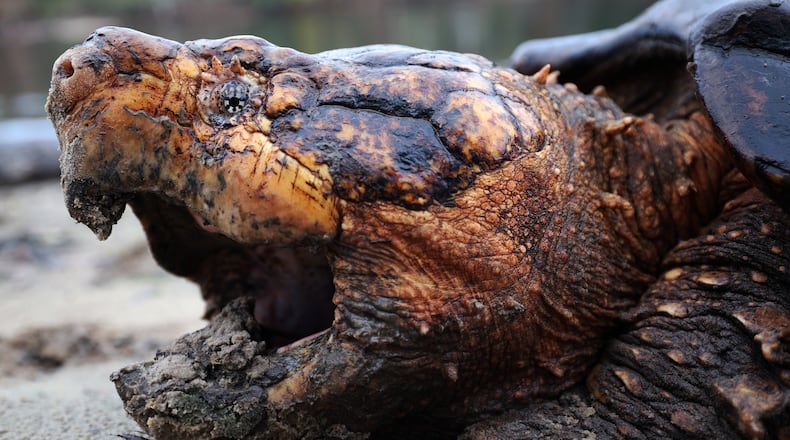It’s the largest freshwater turtle in North America and one that looks downright prehistoric. But this “dinosaur” of a turtle, as it’s often called, which only lives in the Suwannee River basin of Georgia and Florida, is also under threat of extinction.
The U.S. Fish and Wildlife Service (FWS) announced Wednesday it has finalized listing the Suwannee alligator snapping turtle as threatened under the Endangered Species Act. The designation is intended to support preservation of a species that was nearly harvested to extinction, often for soup, and that is believed to number just 2,000 animals.
“This listing will further unite the Service and our partners on the conservation of this iconic species while ensuring those that rely on the outdoors for their recreation and livelihoods can continue their pursuits,” Mike Oetker, Southeast Regional Director of FWS, said in a news release.
The Suwannee River’s headwaters begin in Georgia in the Okefenokee Swamp. The river winds its way into Florida for about 250 miles before reaching the Gulf of Mexico.
FWS initially proposed the federal listing in 2021. The turtles are already designated as threatened by state wildlife authorities in Georgia and Florida.
Georgia law prohibits harassment, capturing, killing, selling or purchasing the snapping turtles, and it’s also illegal to destroy the turtle’s habitat on public lands. Similar laws exist in Florida.
The Endangered Species Act was approved by Congress in 1973 to protect threatened and endangered wildlife. The threatened designation means a species “is one that is likely to become endangered in the foreseeable future throughout all or a significant portion of its range.”
The perils can include threats to a species’ habitat, predation, disease or other man-made or natural factors that put a species’ survival at risk.
In an April 2024 Fish and Wildlife Service article, the agency noted the species was “almost eaten out of existence” starting in the late 1960s as turtle soup grew in popularity, leading to overhunting.
The turtles’ rebound has been difficult. The species is slow to reproduce and mature, and is vulnerable to poaching, commercial and recreational fishing, as well as habitat and water loss from agricultural withdrawals.
The species, known in Latin as Macrochelys suwanniensi, is characterized by its brown and rough spiked shells that look like an alligator’s skin. Thick ridges run the length of its body and down to its long tail.
Males of the species can top 200 pounds and reach about 30 inches in length, though females are significantly smaller. They might look scary, but the turtles are nocturnal and tend to be shy, sticking to the water.
Suwannee alligator snapping turtles are also distinguished by wedge-shaped heads that feature powerful jaws and hooked beaks. The turtles attract prey, including fish, frogs, snakes and other river creatures, with a wormlike appendage on its tongue.
A note of disclosure
This coverage is supported by a partnership with Green South Foundation and Journalism Funding Partners. You can learn more and support our climate reporting by donating at ajc.com/donate/climate/
About the Author
Keep Reading
The Latest
Featured



